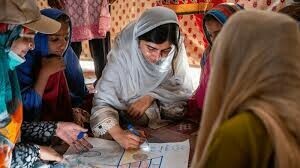THE austerity measures imposed by the government for the current fiscal year has compelled it to significantly slash already reduced public development spending. According to the published data, the federal government and provinces have spent less than a third of the Rs1.6tr budgeted development expenditure during the first half of the present year. In a rapidly slowing economy, development cuts mean more misery and fewer jobs for the people. It also means less money for public services like education, healthcare, clean drinking water, sanitation, etc — which has a direct impact on low-income groups as well as on the country’s economic infrastructure. The cuts have been necessitated by what is described as arguably the most crippling economic downturn in the country’s history, with the FBR’s failure to broaden its net and meet revenue targets only further complicating the situation. The rationale of austerity is to slash the country’s massive public debt, which has now grown to 85pc of the GDP, and bridge the fiscal deficit, which stands at 8.9pc. Yet so far, the government’s finance managers seem to be struggling to get a firm grip on their fiscal troubles. Even if they do manage to succeed, pressures on the budget are likely to continue for the next few years. In other words, going forward, public development expenditure may be slashed further — at the expense of public welfare.
As the government seeks to deliver on its commitments under the ongoing IMF programme, it must ask itself whether it is really a good idea to axe development spending in order to reduce public expenditure. The IMF itself has recently advised Pakistan to fully utilise its development funds in order to prop up the faltering economy. The public development stimulus has acquired greater significance given the fact that measures put in place to stabilise and document the economy have effectively sucked liquidity out of it and led to stagnation in private investment. The economic growth rate is feared to contract to below 2pc — potentially wiping out 1.2m jobs and plunging 1.8m more Pakistanis into poverty by the end of this fiscal year. It is true that the cash-starved government is in a bind considering the enormous fiscal challenges it is faced with. But there is still the option of slashing unproductive expenditure and diverting funds for development in order to support growth and lessen the impact of its stabilisation policies on ordinary people.
Published in Dawn, February 21st, 2020









































